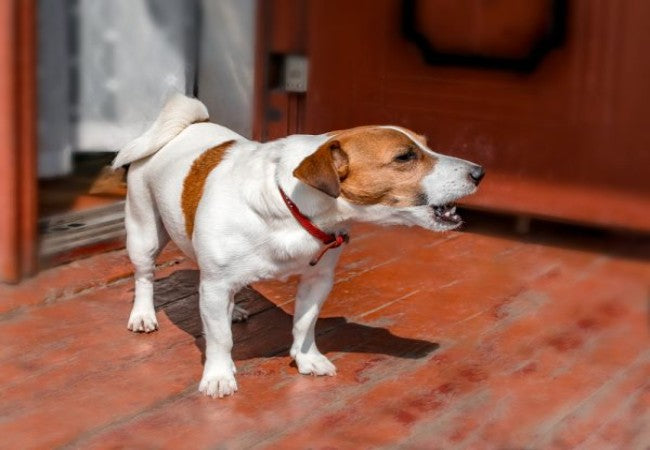Norwegian Lundehund Guide 2025: Unique Puffin Dog Care 🐶✨

In this article
Norwegian Lundehund Guide 2025: Unique Puffin Dog Care 🐶✨
By Dr. Duncan Houston BVSc
Introduction 🌟
The Norwegian Lundehund is an extraordinary small-to-medium spitz from Norway, famed for its puffin-hunting prowess on rocky cliffs. With unique physiology—it sports extra toes, elastic joints, and ears that seal—this agile, intelligent breed is as fascinating as it is rare. Here’s your complete 2025 guide to its history, health, care, training, and suitability for your home.
1. Origins & History 📜
- Originating on Norway’s Værøy and Lofoten islands, used for centuries to navigate cliffs and retrieve puffins.
- “Lunde” means puffin, “hund” means dog in Norwegian; breed nearly went extinct (only ~6 survivors in 1963) before recovery efforts began.
- Recognized by UKC (1995) and AKC Foundation Stock Service in 2011.
2. Unique Physical Traits 🦶🎯
- Polydactyl paws: typically six fully formed toes per foot with extra foot pads to navigate cliffs.
- Elastic physique: neck bends backward to spine; shoulders rotate to allow 90° leg extension.
- Ears seal like “trap doors” to block debris and water.
- Stands 12–15″, weighs 20–30 lb, with short double coat in shades like reddish‑brown, sable, gray, black, white.
3. Temperament & Personality ❤️
- Alert, loyal, intelligent, and active; bonds closely with family but may be shy of strangers.
- Energetic and curious—excellent hiking companions; enjoy mental puzzles.
- Independent and somewhat stubborn—thrive with consistent, positive training and early socialization.
4. Exercise & Enrichment Activities 🧠
- Moderate to high exercise: needs at least 1–2 hrs daily—walks, hiking, puzzle games.
- Enjoy dog sports like agility and scent work; thrive when challenged physically and mentally.
- On leash or in fenced yards due to high prey drive and adventurous nature.
5. Grooming & Coat Care ✂️
- Weekly brushing to manage shedding, more during coat blow seasons.
- Bathe as needed (~monthly); keep ears clean, nails trimmed, and dental care regular.
6. Health & Lifespan 🩺
Lifespan: Around 12–15 years.
Key Health Risks:
- Lundehund syndrome (IL): Protein-losing enteropathy affects ~30%—can be managed with diet/meds, but serious enough to cause mortality.
- Other GI issues: sensitive digestion, inflammatory bowel symptoms.
- Inbreeding-related concerns: reduced fertility, small litters, genetic fatigue—programs underway for outcrossing.
- Recommend regular vet checkups: GI monitoring, joint, and dental health.
7. Nutrition & Feeding 🍲
- High-quality kibble in two controlled meals daily; monitor weight and adjust portions.
- For GI-sensitive individuals: low-fat, easily digestible foods; probiotics and vet guidance essential.
- Always provide fresh water.
8. Training & Socialization 🎓
- Positive reinforcement works best—avoid harsh corrections.
- Early, diverse socialization with people, pets, and environments reduces fearfulness.
- Training should be engaging, short, and varied to prevent boredom and stubbornness.
9. Family Fit & Living Situations 🏡
- Suitable for active households—hikers, explorers, experienced owners.
- Generally good with children if socialized early; supervision recommended.
- Not ideal for hot climates—thick coat; prefers cooler environments.
- Apartment-friendly if routines include ample exercise and enrichment.
10. Adoption & Breeder Advice 🌟
- Breed is rare—prepare for waitlists and reputable breeders with health screenings.
- Look into health-tested breeding programs, possibly including controlled outcrosses.
- Adoption unlikely due to rarity; expect puppy prices from $2,000–3,000 USD; rescue alternatives may be limited.
11. FAQs ❓
- How many toes? Usually 6 toes per paw—defining polydactyl trait.
- Are they unusual? Yes—neck flexibility, toe count, joint range, and ear seals make them unique.
- Do they bark? Moderate—alert and vocal but manageable with training.
- Good for apartments? Possible—if a calm environment and activity are maintained.
- Long-lived? Yes—often 12+ years with good care.
12. Ask A Vet, 🐶
- Ask A Vet: Get expert advice on GI health, diet plans for Lundehund syndrome, joint surveillances, and behavior management.
13. Final Thoughts ✅
The Norwegian Lundehund is a marvel of canine adaptation and history—small, athletic, and innately fascinating. But with its rarity, unique health needs, and energetic lifestyle requirements, it’s best suited to experienced, committed owners. If you’re ready to embrace this exceptional breed, start with trustworthy breeders or rescue groups, and support your journey at AskAVet.com. Don’t forget to download the Ask A Vet app for personalized guidance as you welcome this puffin dog into your life!






